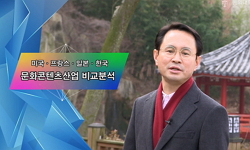This study examines the theatrical conditions of theater in Busan during the liberation period. This was explored by analyzing the characteristics, management, and operational systems of theaters as theater venues in Busan during that time. Through th...
http://chineseinput.net/에서 pinyin(병음)방식으로 중국어를 변환할 수 있습니다.
변환된 중국어를 복사하여 사용하시면 됩니다.
- 中文 을 입력하시려면 zhongwen을 입력하시고 space를누르시면됩니다.
- 北京 을 입력하시려면 beijing을 입력하시고 space를 누르시면 됩니다.
https://www.riss.kr/link?id=A109627960
-
저자
정민경 (부산대학교)
- 발행기관
- 학술지명
- 권호사항
-
발행연도
2025
-
작성언어
Korean
-
주제어
해방기 ; 부산 ; 극장 ; 극장관리인 ; 연극공간 ; 사회공론장 ; 부산극장협회 ; 경남극장운영위원회 ; Liberation Period ; Busan ; Theater ; Theater Manager ; Theatrical Space ; Public Sphere ; Busan Theater Association ; Gyeongnam Theater Operations Committee
-
등재정보
KCI등재
-
자료형태
학술저널
-
수록면
31-58(28쪽)
- DOI식별코드
- 제공처
-
0
상세조회 -
0
다운로드
부가정보
다국어 초록 (Multilingual Abstract)
This study examines the theatrical conditions of theater in Busan during the liberation period. This was explored by analyzing the characteristics, management, and operational systems of theaters as theater venues in Busan during that time. Through this analysis, it sheds light on the state of the Busan theater scene from a theatrical history perspective. After liberation, theaters in Busan not only continued efforts to establish a foundation for national culture and arts but also served as performance spaces and public sphere. They functioned as hubs for local stage art movements, centers for the production and planning of cultural and artistic content, and bases for the operation of artistic troupes, responding to the demands of the time in various ways. Challenges such as the struggle against lowbrow commercial performances, improvements in theater facilities, and the appointment of theater managers were key issues raised by the local community, ultimately contributing to the formation and development of the regional artistic ecosystem. This study provides insights into the environment for theatrical creation and appreciation, complementing and expanding the understanding of Busan’s theater history.
동일학술지(권/호) 다른 논문
-
재난의 양상과 재난인문학의 필요 -세월호 참사 치유시를 중심으로
- 고려대학교세종캠퍼스 한국학연구소
- 조춘희
- 2025
- KCI등재
-
조선의 8대 명당에 대한 비판적 분석과 새로운 대안 제시
- 고려대학교세종캠퍼스 한국학연구소
- 지종학
- 2025
- KCI등재
-
오컬트 영화 <파묘>의 무속의례 구현과 신명풀이적 성격
- 고려대학교세종캠퍼스 한국학연구소
- 염원희
- 2025
- KCI등재
-
이인섭과 극동 중국계 공산주의자들과의 교류 연구 -『이인섭과 독립운동자료집』을 중심으로-
- 고려대학교세종캠퍼스 한국학연구소
- 조대호
- 2025
- KCI등재





 DBpia
DBpia






